  |
 |
 |
 |
 |
| Sun 28 Dec 2025 |

The History Of All Saints' WickhambrookSide Chapels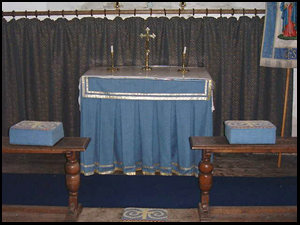
Lady Chapel It was during the restoration of the chapel of Ease in the 1960s that on the removal of the original flooring, a large stone coffin dated around 1275 was found. A broken slab was placed loosely over this so that it could be easily examined by the Archaeological Society of Bury St Edmunds. The coffin was obviously that of an important personage, but as yet the name is unknown although the likely person is that of Walter de Clopton who died in 1326. AdornmentsThe new altar cloth, cross, candlesticks, prayer book and bible, alms dish, lectern, pulpit, altar rails, prayer desk and kneelers, were dedicated by the Lord Bishop of Dunwich on 3rd June 1966. Sadly many items such as the alms dishes are kept permanently locked away now due to concerns about theft. Also all moveable items are marked invisible to also dissuade theft. 
Alms Dish The alms Basin is used for collections during services at the church. For insurance reasons this is kept locked away during the week. 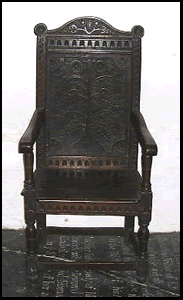
Bishop's chair During a visitation by a bishop this chair is used by him and is aptly called the Bishops chair. In a cathedral this would be a throne. Both in parish churches and cathedrals the Bishop's Chair is found on the north wall of the Sanctuary. 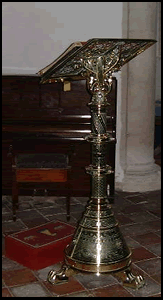
Lectern The lectern is used for the readings taken from the Old and New Testament and is a stand for Liturgical books. The eagle is a mystical emblem of Christ. The eagle is the symbol of St. John the Evangelist whose words "soared up into the presence of Christ" just as the eagle of the medieval bestiaries renewed itself by flying into the sun. 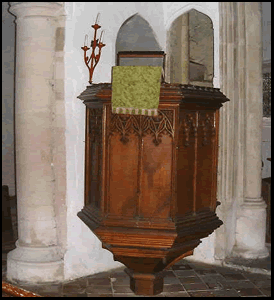
Pulpit The pulpit is an elevated platform (Latin: pulpitum) for a preacher or reader. The pulpit is commonly found on the north side of the chancel arch as is the case here at All Saints' church. In the 17th century, the congregation faced westwards, and where the organ now stands there stood a three-decker pulpit. In the 19th century, this pulpit was removed and its place taken by the organ. The old chancel roof members were taken down and used to make the existing pulpit and priest's desk; the congregation was turned about and faced eastwards on the existing pitch pine pews. Baptistery
Font The font (10) was moved from the South West corner to the NW corner in January 1956. The old floorboards were removed and paments laid to match the surrounding floor. The four pews were arranged against the North and North West walls. Sanctuary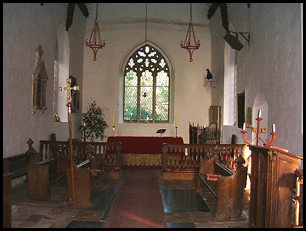
Chancel and Sanctuary The sanctuary was enlarged in 1957 when the Communion rails - which were too close to the altar - were re-fixed between the present step and the priest's door. Pews And Benches
Poppy head bench end The aisles were filled with high box pews. These were removed, together with the rough brick flooring which was replaced by paments. The church was restored in May 1886 at a cost of £300, when it was re-seated. There were 420 sittings. At present there is seating for 150. The central and South aisles both consist of the fixed Victorian pews installed in 1886. In the south aisle and Sanctuary there are older benches which have the distinctive "poppy head" design very popular in East Anglia since the 15th century. Poppy head is possibly derived from poppis meaning the "figure head of a ship". Poppy heads are ornamental finials at the top of bench ends and often resemble "fleur-de-lis". |

